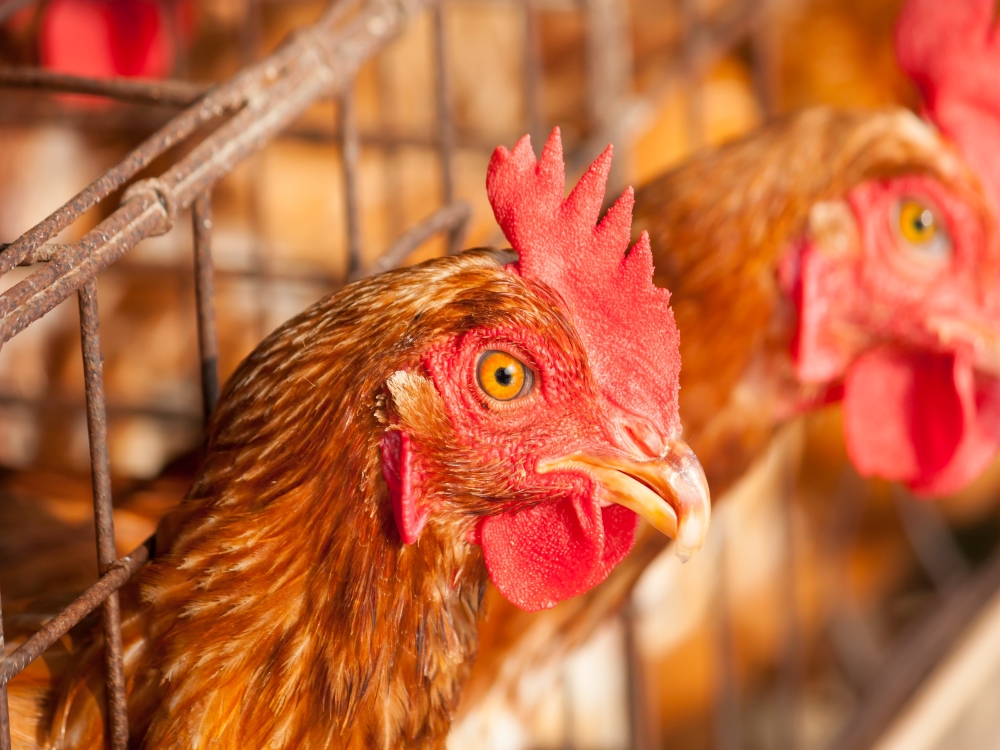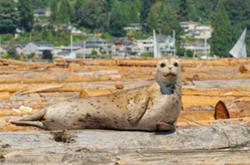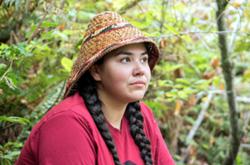In 1997, Hong Kong could have been ground zero of a far worse pandemic than COVID-19. The recently discovered H5N1 strain of avian flu had spilled over from chickens to humans.
In a dramatic move to eradicate the virus, then-Hong Kong director of health Dr. Margaret Chan ordered the destruction of all poultry in the Hong Kong Special Administrative Region, and a ban on imports from Mainland China. It had infected 18 people and killed 6 in the jurisdiction.
Dr. Chan’s actions stopped the outbreak cold — and eventually helped make her the director-general of the World Health Organization.
Twenty-five years later, the virus has again spread around the world through wild and domestic birds. B.C. is a focus of infection. If it does spill over to humans, our public health response is likely to make things even worse — as if we didn’t have enough bad news about the ongoing COVID-19 pandemic.
According to the U.S. Centers for Disease Control and Prevention, the H5N1 was first identified in 1996. Then it returned in 2003, and began to pop up in China, Vietnam and Thailand. Eventually it reached Europe and Africa. H5N1 was still an avian virus, but very rarely it infected mammals. Tigers in a Bangkok zoo caught it from the chickens they were fed. Equally rarely, humans caught it. The CDC says only about 860 people have contracted H5N1 avian influenza, and just over half of them have died.
That case fatality rate probably isn’t as bad as it sounds. Most sources say the CFR is 53 per cent — and that’s for confirmed cases, all of which required hospitalization.
But longtime flu blogger Mike Coston argues that, like other viral diseases, H5N1 avian flu has caused mild and asymptomatic cases that may never be identified. So the true CFR may be dramatically lower. It’s also true that CFRs can vary widely from region to region and group to group: poor people in poor countries will die more often than rich people in rich countries.
Still, if an average of 10 per cent of H5N1 cases are fatal, that means 100,000 deaths out of every million cases. To put it into perspective, Canada has seen five million cases of COVID-19 and 50,000 deaths — a CFR of just one per cent.
Mutation and migration
Ever since 1997, H5N1 seems to have had catastrophic potential for harming humans, but it hasn’t mutated — yet — into a form that could spill over to us on a large scale.
But it certainly mutates. According to the U.S. CDC, H5N1 mutated into H5N6 and H5N8, and then mutated again into a new strain of H5N1 that finally entered the Western Hemisphere late in 2021. It appears to have moved rapidly south since then. A girl in Ecuador contracted H5N1 in January. Peru has reported finding the virus in three sea lions and a dolphin, and Chile has identified H5N1 in a seagull chick.
So through all its mutations, H5N1 has retained the ability to infect mammals, and it may now have gained the ability to move from mammal to mammal. Last October, a mink farm in Spain saw a sudden spike in mortality. Since H5N1 had been found in nearby seagulls and gannets, veterinarians tested the minks for it. They tested positive. None of the farm’s workers tested positive.
The researchers wrote: “Our findings also indicate that an onward transmission of the virus to other minks may have taken place in the affected farm. This is suggested by the increasing number of infected animals identified after the confirmation of the disease and the progression of the infection from the initially affected area to the entire holding.”
If H5N1 can jump from mink to mink, it could jump from human to human. This is a very worrying thought.
A deadly threat to birds and food security
Meanwhile, however, H5N1 remains a deadly threat to wild birds and poultry. The CDC recently reported that in the U.S. since January 2022, almost 60 million wild and domestic birds have either died of H5N1 or been culled to prevent its further spread.
Here at home, the Canadian Food Inspection Agency says over seven million birds have been “impacted” (infected or culled) by H5N1.
B.C. accounts for 3.6 million of those birds. Our first outbreak was in the north Okanagan in April 2022. In January 2023, multiple outbreaks were reported in commercial flocks in Chilliwack, with one in Abbotsford and backyard flocks in Tofino and the Alberni-Clayoquot Regional District.
While outbreaks are scattered all over the province, most appear to have occurred in the Fraser Valley, which dealt with a similar outbreak of H7N3 in 2004. In that outbreak, 19 million birds were culled and two workers caught the virus. Their chief symptom was conjunctivitis, and they quickly recovered.
An immediate consequence of the current H5N1 outbreaks is a reduction in the quantity of poultry and eggs, making them more expensive and thereby increasing the food insecurity of many poor Canadians. (Californians are trying to bring eggs illegally across the border from Mexico, where they’re cheaper despite that country’s own H5N1 outbreaks).
More worrying is the possibility that the H5N1 virus in millions of birds will eventually evolve into a strain that can move easily from human to human while retaining a high CFR.
The B.C. Medical Journal recently published a guide to diagnosis and management of H5N1 in humans, which suggests that our health-care community takes the possibility very seriously.
The nightmare scenario in the Fraser Valley
Let’s imagine that such a mutation occurs somewhere in the Fraser Valley and infects three or four workers who are disposing of culled birds. They take the virus home to their families, and then, about a week later, to emergency rooms in Fraser Health. During hours-long waits, they spread it to others, including two nurses who infect both their own families and their colleagues.
Three of the first 30 cases in the Fraser Valley are fatal, and H5N1 is rapidly confirmed as the cause. Just as Wuhan was the focus of the world’s attention in early 2020, Vancouver is now famous as the place where human-to-human H5N1 has not only been confirmed, but confirmed in dozens of cases.
Both the provincial and federal governments are stunned. Locking down the Lower Mainland seems impossible. Too many people and too much commerce flow through the region. Too many people after COVID-19 have no trust in government, least of all in public health. And too many of those people are health-care workers. Some resign. Others go on strike, demanding better personal protective equipment and serious infection control in doctors’ offices, clinics and hospitals.
The virus’s genome is quickly identified. But it will be months before vaccines can be developed, tested and then produced and distributed.
Until then, H5N1 will spread, while evolving new strains.
The big shutdown
Instead of waiting for a government lockdown, the public shuts itself down. As in the early days of COVID-19, people scramble for groceries and then hunker down at home. Flights into and out of YVR are cancelled. The streets are half empty. Bird flu denialists, believing their own misinformation, plan a march through downtown Vancouver; it fails when the couple organizing it both die of H5N1 within hours of each other. Videos of their dying moments flood social media. Even so, denialism and conspiracy theories continue, with Bill Gates and George Soros as the masterminds behind the outbreak.
The U.S. closes the Canadian border, but it’s too late. Cases traceable to Vancouver appear in San Francisco, Los Angeles, Miami and New York City. Within a week, the “Vancouver flu” is in Japan, South Korea and China. A Mediterranean cruise ship anchors off Malta with almost a thousand cases; over a hundred passengers and crew are dead within two weeks.
By then, doctors have noticed that H5N1 exploits the weakened immune systems of COVID-19 survivors. For three terrible weeks, the case fatality rate rises to 27 per cent. Ironically, the immunocompromised who isolated throughout the COVID-19 pandemic manage to evade H5N1 as well. A genuine lockdown, eagerly accepted by the public, lowers the case count while deaths drop to 13 per cent.
But this is just a scenario, largely derived from our experience with COVID-19. As citizens, we might unite again and follow public-health guidance. Health-care workers might rise again to a new challenge. H5N1 in humans might turn out to be genuinely mild, with no “long bird flu” consequences.
But if COVID-19 has taught us anything, we should assume H5N1 in humans will be highly contagious and very lethal. We should prepare accordingly, or repeat the needless deaths that “mild” COVID has inflicted on us. ![]()

















Tyee Commenting Guidelines
Comments that violate guidelines risk being deleted, and violations may result in a temporary or permanent user ban. Maintain the spirit of good conversation to stay in the discussion and be patient with moderators. Comments are reviewed regularly but not in real time.
Do:
Do not: